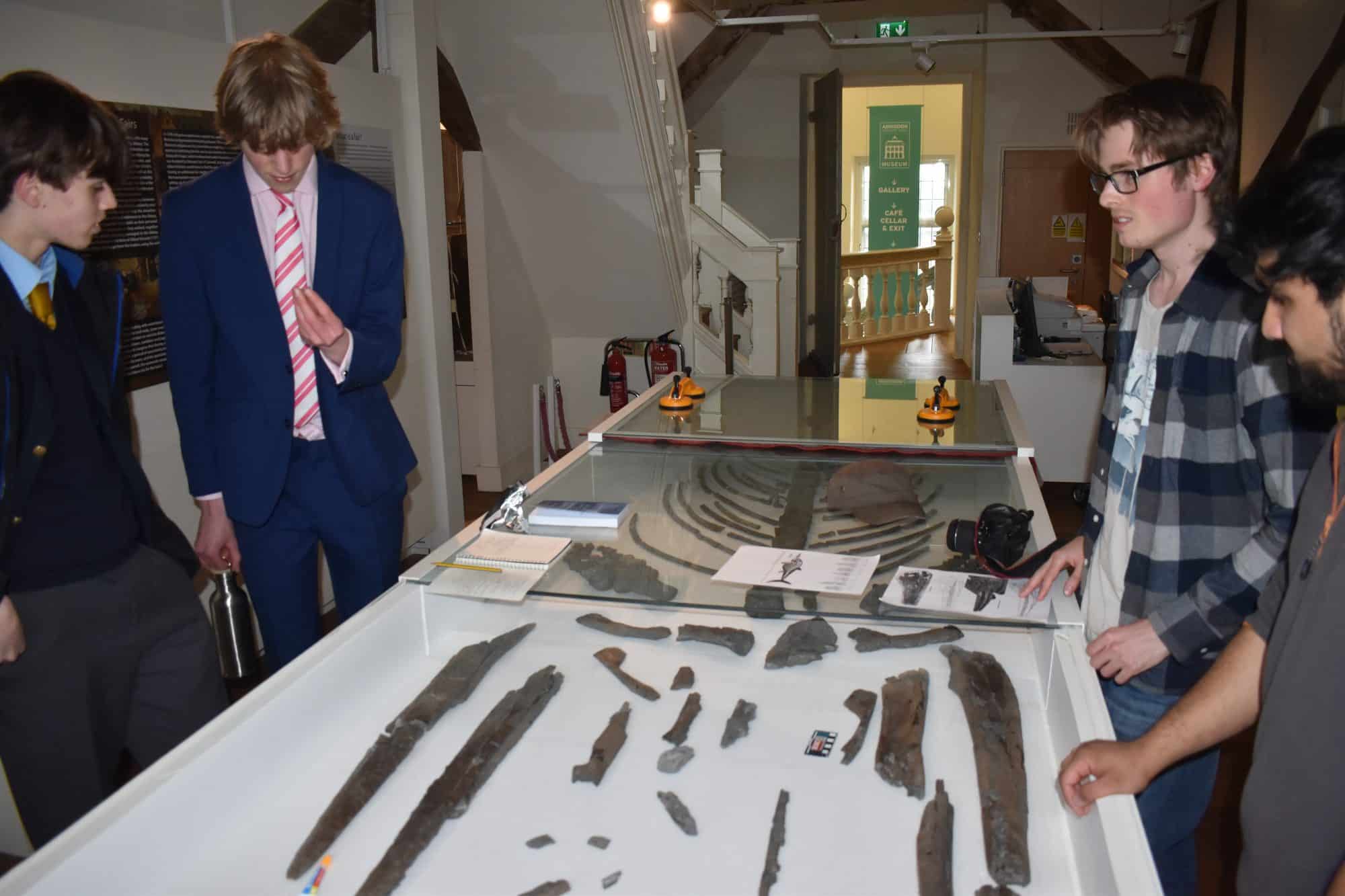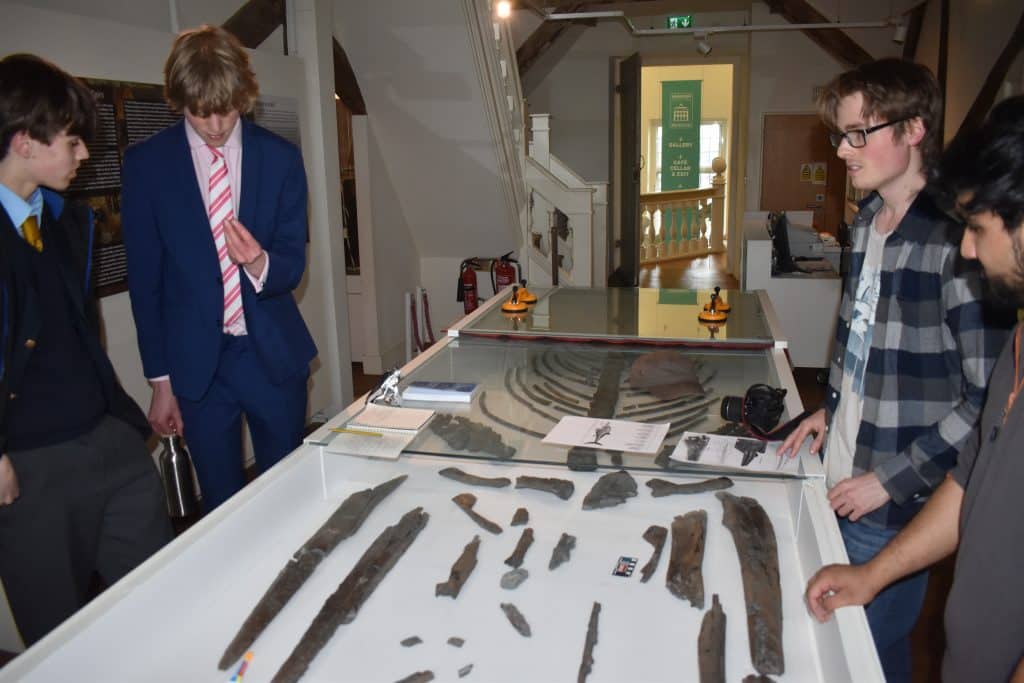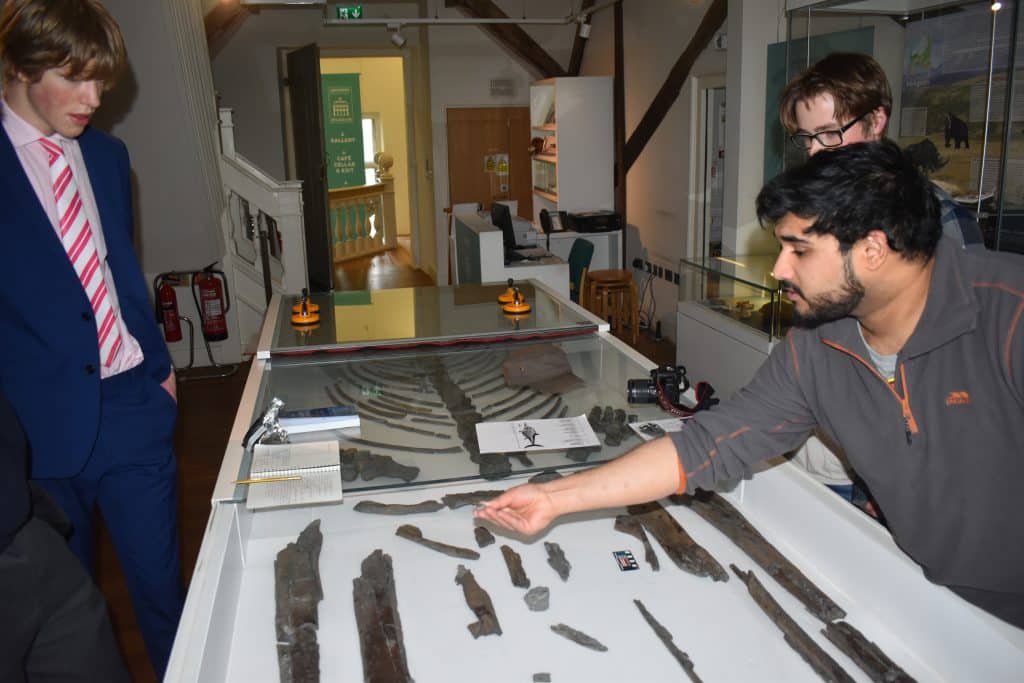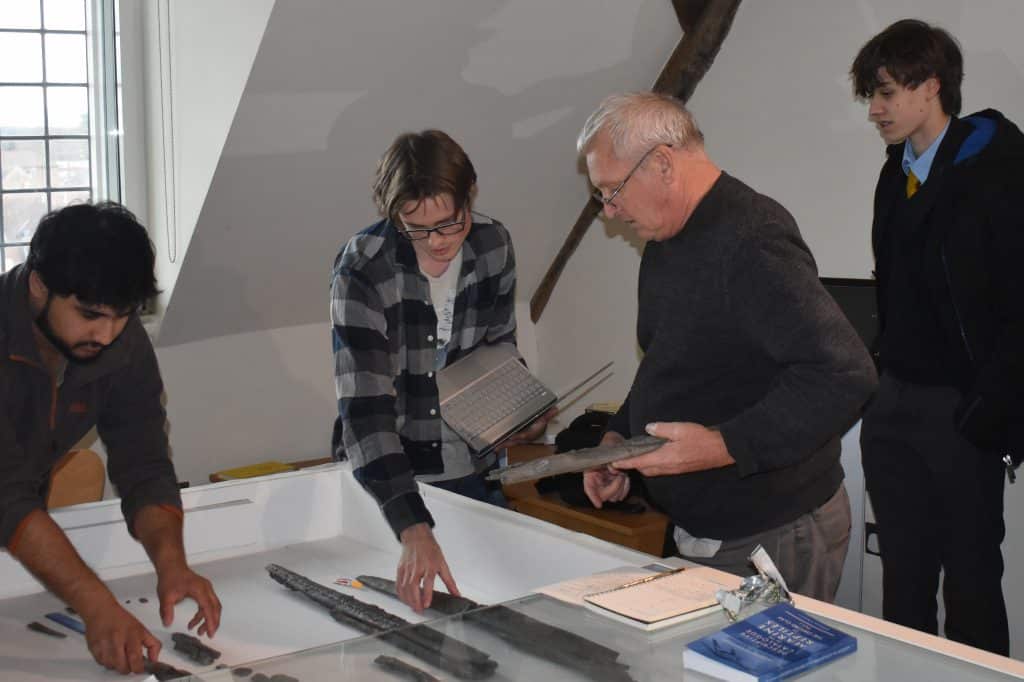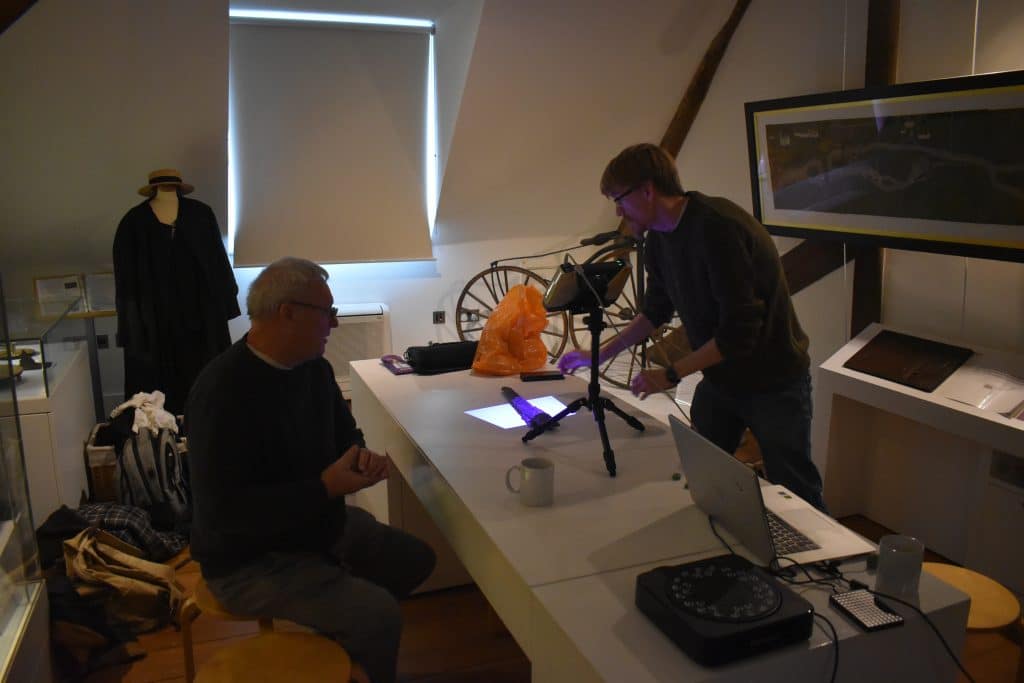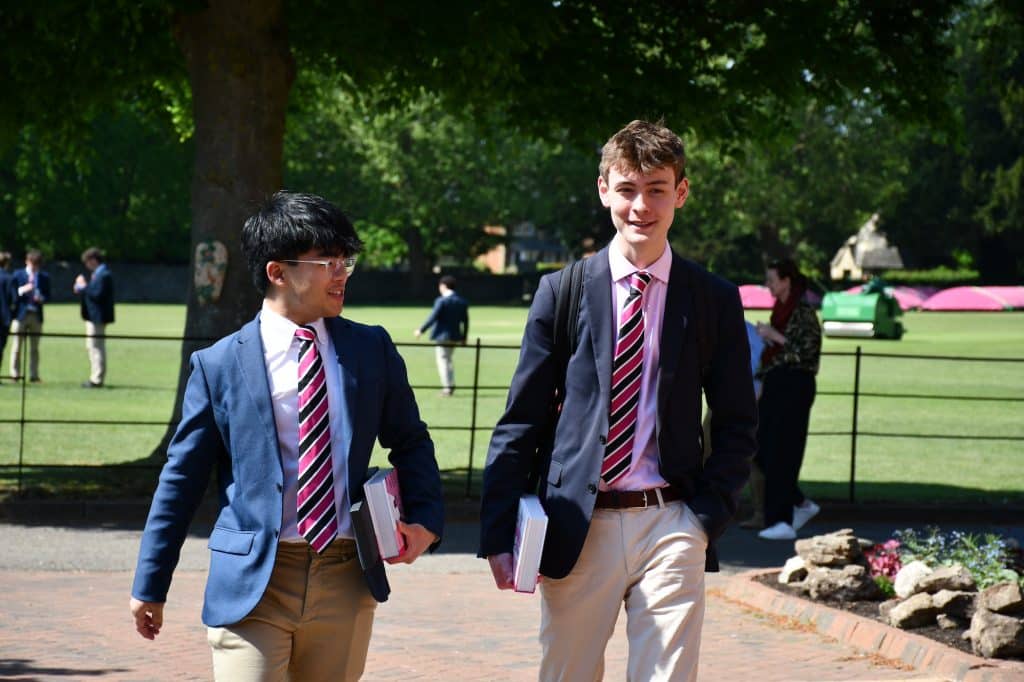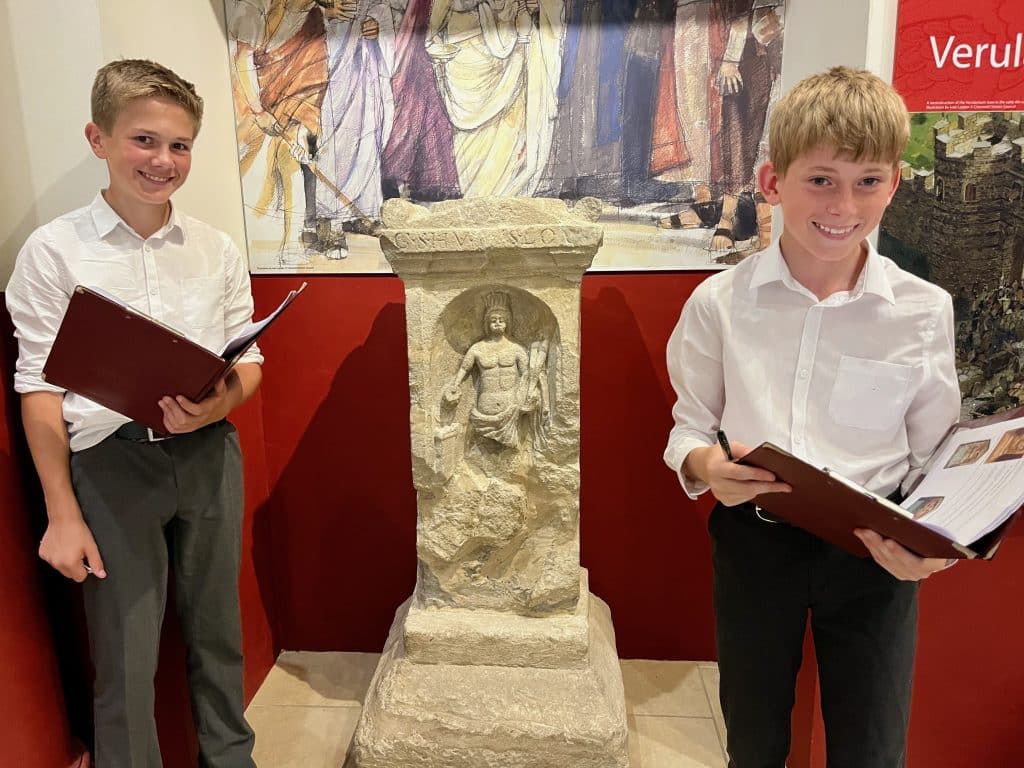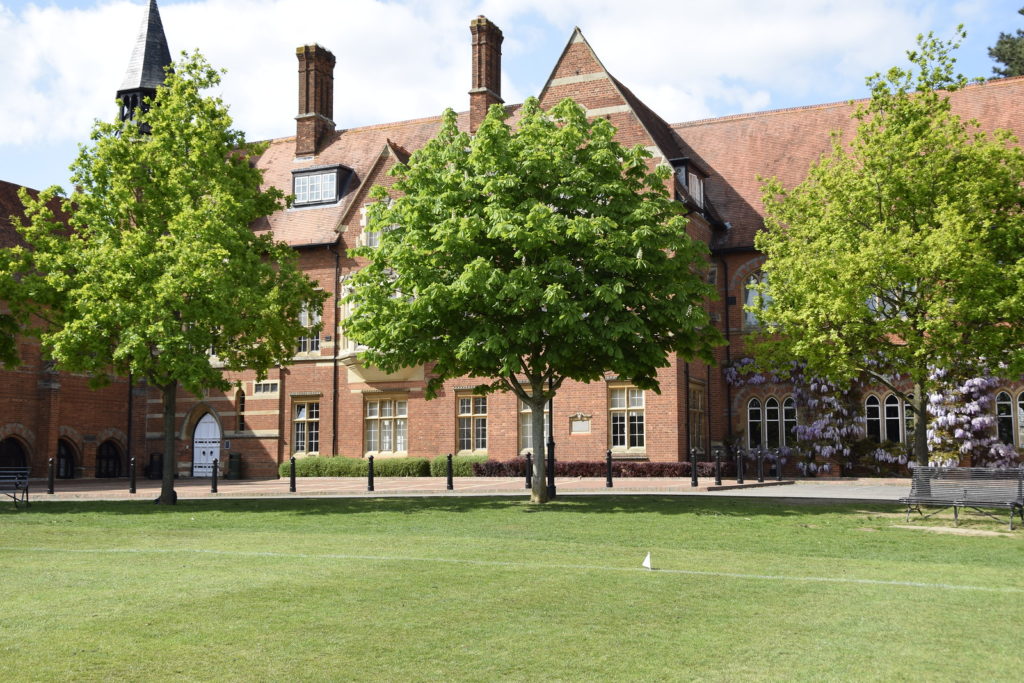8 March 2023
Abingdon students James Longworth and Alex Heffernan were given an exclusive opportunity to meet University of Portsmouth scientists carrying out an analysis of the ichthyosaur fossil displayed at Abingdon County Hall Museum. The impressive specimen of the marine reptile was discovered in gravel pits south of Abingdon in 1988 but has never been properly classified or even displayed with all the bones in the correct positions. The Portsmouth palaeontologists demonstrated the techniques they were using to classify and further understand the specimen, including 3D scanning and spreadsheet modelling of features to find similarities with the closest known species of ichthyosaur. The 3D scanning technique was explained by Professor David Martil who uses the technique to reconstruct both computer and physical models and diagrams of delicate specimens, allowing them to be manipulated, compared and shared among researchers anywhere in the world. As well as handling some of the ichthyosaur fossil remains, James and Alex were also shown the huge vertebra of a predatory plesiosaur from the same era and other interesting fossils from the Oxford and Kimmeridge clay formations which are characteristic of the Abingdon area. This was a fascinating insight into the painstaking, background work done by palaeontologists which is often taken for granted when we watch films and documentaries about prehistoric life on Earth. It was also interesting to see that Abingdon and Oxfordshire are so significant in this story of prehistoric marine life and that many questions still remain to be answered about the fossils from the local area.
